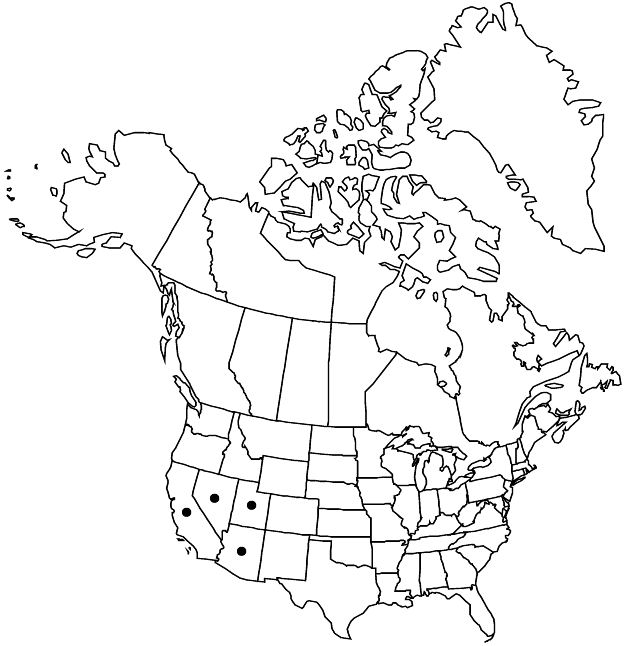Difference between revisions of "Mentzelia jonesii"
Phytologia 21: 282. 1971.
FNA>Volume Importer |
imported>Volume Importer |
||
| Line 65: | Line 65: | ||
|publication year=1971 | |publication year=1971 | ||
|special status=Endemic | |special status=Endemic | ||
| − | |source xml=https:// | + | |source xml=https://bibilujan@bitbucket.org/aafc-mbb/fna-data-curation.git/src/bb6b7e3a7de7d3b7888a1ad48c7fd8f5c722d8d6/coarse_grained_fna_xml/V12/V12_18.xml |
|genus=Mentzelia | |genus=Mentzelia | ||
|section=Mentzelia sect. Trachyphytum | |section=Mentzelia sect. Trachyphytum | ||
Revision as of 20:07, 27 May 2020
Plants candelabra-form, 20–40(–50) cm. Basal leaves persisting; petiole present or absent; blade linear-lanceolate to linear, margins deeply lobed to dentate. Cauline leaves: petiole absent; blade ovate-lanceolate to linear, to 15 cm, margins deeply to shallowly lobed or entire. Bracts green, ovate to lanceolate, 3.7–5.9 × 0.8–3.9 mm, width 1/8–2/3 length, not concealing capsule, margins entire. Flowers: sepals (2–)4–8(–10) mm; petals yellow to orange proximally, yellow distally, (6–)8–22 mm, apex acute to rounded; stamens 20+, 3–10 mm, filaments monomorphic, filiform, unlobed; styles 4–10 mm. Capsules clavate, 15–38 × 2–4 mm, axillary curved to 180° or S-shaped at maturity, usually inconspicuously longitudinally ribbed. Seeds 15–30, in 2+ rows distal to mid fruit, tan, dark-mottled, usually irregularly polygonal, occasionally triangular prisms proximal to mid fruit, surface tuberculate under 10× magnification; recurved flap over hilum absent; seed coat cell outer periclinal wall domed, domes on seed edges more than 1/2 as tall as wide at maturity. 2n = 36, 54.
Phenology: Flowering Mar–May.
Habitat: Sandy to rocky washes, fans, or flats, creosote-bush scrub, Joshua-tree or saguaro woodlands.
Elevation: 200–1500 m.
Distribution

Ariz., Calif., Nev., Utah.
Discussion
Mentzelia jonesii is widespread throughout southeastern California and western and southern Arizona. However, tetraploid populations have been found only in California and far northwestern Arizona. Hexaploids in California have previously been called M. californica. The ranges of M. jonesii and the diploid, M. nitens, overlap in southern Inyo County, California, and these species are difficult to distinguish morphologically without mature seeds; sepal and petal lengths, which have sometimes been used to distinguish them, overlap completely.
Selected References
None.